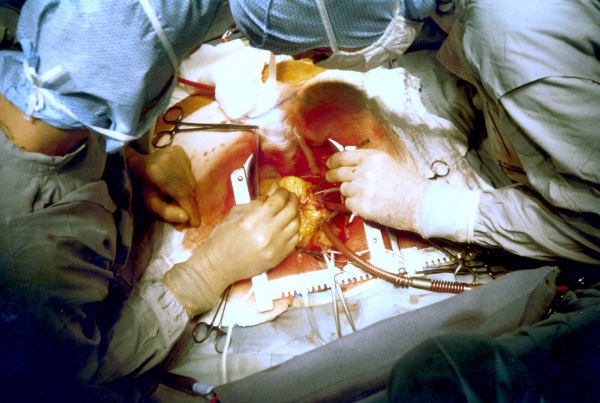
You can now use light to monitor a surgical patient's blood continuously, thanks to the work of University of Central Florida scientist and professor Aristide Dogariu. The technology provides a real-time status for the first time by using an optical fiber to beam light through a patient’s blood and interpret signals that are returned. In some situations, this could eliminate the need for a doctor to wait while blood is drawn and then tested, researchers say.
Dr. William DeCampli, who is a professor at the UCF College of Medicine and chief of pediatric cardiac surgery at Arnold Palmer Hospital, helped to develop the technology, testing it during surgery on infants. “I absolutely see the technique having potential in the intensive-care setting, where it can be a part of saving the lives of critically ill patients with all kinds of other disorders,” he said.
In the course of surgery, a patient’s blood can coagulate and clot very quickly, leaving physicians wary because a clot can lead to a stroke, pulmonary embolism, and a host of other serious conditions. During cardiovascular surgery, coagulation is of special concern because a clot can prevent the heart-lung machine from circulating a patient’s blood. To prevent this, doctors often give medication that thins the blood. Approximately every 30 minutes, blood is withdrawn and taken to a lab for testing, which typically requires a minimum of 10 minutes. The process is slow, preventing doctors from accessing the most up-to-date information in lengthy surgeries.
Dogariu, who is a Pegasus Professor in UCF’s College of Optics and Photonics, wanted to speed up that process. His machine beams light at the blood passing through the tube, detecting light as it bounces back. According to the journal Nature Biomedical Engineering, the machine constantly interprets the light's backscatter to determine how rapidly red blood cells are vibrating. Coagulating blood vibrates slowly, requiring a blood thinner.
Dogariu’s technology lets doctors know the first sign of clotting, giving timely information as the procedure progresses. “It provides continuous feedback for the surgeon to make a decision on medication. That is what's new. Continuous, real-time monitoring is not available today. That is what our machine does, and in surgeries that can last for hours, this information can be critical,” Dogariu said.
DeCampli has tested the machine during cardiac surgeries on 10 infants over the past year. “These things come about because of collaboration between a top-ranked engineering university and a top-ranked children's hospital all in one city. I think it's the perfect way to make advances in medicine that are at the engineering frontiers.”
DeCampli credits the UCF with facilitating collaborations that spark innovation, without which he would never have partnered with Dogariu, who had previously researched the application of light-detection technology on more industrial applications.
Though a larger study is in the works, the researcher's proof-of-concept study is available in a recently published paper.
Source: Phys.org and Medindia.net
Advertisement
Learn more about Electronic Products Magazine





